Personalized Medicine's Paradox of Balancing Innovation and Affordability
Precision medicine holds the promise of transforming healthcare by offering treatments tailored to the unique genetic and molecular profiles of individual patients. This personalized approach can significantly improve treatment outcomes, reduce adverse effects, and enhance the overall quality of care. However, as the field of precision medicine advances, it encounters a paradox: the need to balance the innovation driving these breakthroughs with the affordability required to make them accessible to all.
The financial burden associated with developing personalized therapies is substantial. From high research and development costs to complex manufacturing processes, the journey from laboratory to patient is often long and expensive. This results in treatments with price tags that can reach millions of dollars, presenting a significant challenge for healthcare systems and patients alike.
In this article, we will explore the challenges and strategies for making personalized medicine both innovative and affordable. By examining case studies, discussing ethical considerations, and highlighting innovative financing models, we aim to shed light on how stakeholders can work together to ensure that the benefits of precision medicine are accessible to everyone.
The High Cost of Personalization
The financial burden associated with developing personalized therapies is immense. Unlike traditional treatments, which are designed for broad patient populations, personalized therapies are tailored to the genetic and molecular profiles of individual patients. This specificity requires extensive research and development, complex manufacturing processes, and rigorous clinical trials to ensure safety and efficacy.
A prime example of the high cost of personalized medicine is Zolgensma, a gene therapy developed by Novartis for spinal muscular atrophy (SMA). With a price tag of $2.1 million, Zolgensma is the most expensive drug in the world. This staggering cost reflects the significant investments required for its development and manufacturing. The journey of Zolgensma from concept to market involved groundbreaking research in gene therapy, large-scale clinical trials, and the creation of specialized manufacturing facilities capable of producing the complex biologic material used in the treatment.
The development of personalized therapies like Zolgensma involves several costly stages:
- Research and Development (R&D): The initial phase includes basic scientific research, identification of therapeutic targets, and preclinical testing. This stage is time-consuming and resource-intensive, often involving cutting-edge technologies such as CRISPR gene editing and next-generation sequencing.
- Clinical Trials: Conducting clinical trials for personalized therapies is particularly challenging. These trials must be carefully designed to account for the unique genetic profiles of participants. Recruiting sufficient numbers of patients, especially for rare diseases, can be difficult and expensive. Additionally, regulatory requirements for proving safety and efficacy are stringent, further driving up costs.
- Manufacturing: Producing personalized therapies involves complex and specialized processes. For gene therapies like Zolgensma, this includes developing viral vectors to deliver the therapeutic genes and ensuring the production of high-quality, consistent biologic material. These processes require significant investments in technology, facilities, and quality control.
The ethical implications of high pricing for life-saving treatments are profound. While the cost of developing and bringing a personalized therapy to market is undeniably high, the resulting prices can put these treatments out of reach for many patients. This creates a disparity in access to potentially life-saving therapies, raising questions about equity and fairness in healthcare.
High prices can lead to difficult decisions for patients and their families, who may be forced to choose between pursuing a costly treatment and facing financial ruin. Healthcare systems and insurers also grapple with the sustainability of covering such expensive therapies, which can strain budgets and limit the availability of other essential services.
Addressing these ethical challenges requires a concerted effort from all stakeholders, including pharmaceutical companies, policymakers, healthcare providers, and patient advocacy groups. Strategies to balance innovation with affordability must be developed to ensure that the benefits of personalized medicine are accessible to all patients, regardless of their financial circumstances.
Strategies for Cost Reduction and Value-Based Pricing
As the financial burden of developing personalized therapies continues to grow, it becomes crucial to explore strategies for cost reduction and value-based pricing to make these innovative treatments more accessible. By streamlining development processes, adopting innovative financing models, and implementing value-based pricing frameworks, stakeholders can work towards balancing innovation with affordability in precision medicine.
Streamlining Development Processes
One of the most effective ways to reduce costs is by streamlining the development processes of personalized therapies. Leveraging advanced technologies and computational methods can significantly enhance efficiency and reduce the time and resources required for drug discovery and validation.
Example: Notable Labs
Notable Labs employs artificial intelligence (AI) and machine learning to accelerate the discovery and validation of new therapies. By analyzing vast amounts of genomic and clinical data, these advanced technologies can identify promising therapeutic candidates more quickly than traditional methods. AI algorithms can predict how different patients will respond to specific treatments, allowing researchers to focus on the most promising candidates and reducing the need for extensive trial-and-error testing. This approach not only speeds up the development process but also lowers costs by minimizing wasted efforts on ineffective therapies.
Innovative Financing Models
Innovative financing models, such as risk-sharing agreements and outcome-based pricing, offer promising solutions to the high costs associated with personalized therapies. These models align the interests of pharmaceutical companies, healthcare providers, and payers by tying the cost of treatment to its real-world effectiveness.
Risk-Sharing Agreements Risk-sharing agreements involve pharmaceutical companies and healthcare payers sharing the financial risks associated with new therapies. Under these agreements, the payment for a treatment is contingent upon its performance in the real world. If the therapy fails to achieve the expected outcomes, the pharmaceutical company may offer refunds or discounts to the payer. This model incentivizes companies to develop effective treatments while mitigating financial risk for payers.
Outcome-Based Pricing Outcome-based pricing ties the cost of a therapy to the actual outcomes achieved by patients. Instead of paying a fixed price, healthcare payers only pay for the treatment if it delivers the promised results. This approach ensures that the price reflects the therapy's value to patients and the healthcare system, encouraging the development of high-quality, effective treatments.
Value-Based Pricing Frameworks
Implementing value-based pricing frameworks is another key strategy for balancing innovation and affordability in personalized medicine. These frameworks consider the long-term societal and economic benefits of a therapy when determining its price, rather than focusing solely on the immediate costs.
Incorporating Long-Term Benefits Value-based pricing frameworks take into account the potential savings from reduced hospitalizations, increased productivity, and improved quality of life. For example, a personalized therapy that effectively manages a chronic condition can prevent costly hospital admissions and allow patients to remain active and productive. By considering these long-term benefits, value-based pricing can make personalized therapies more affordable while ensuring that companies are rewarded for their innovation.
Examples of Potential Savings
- Reduced Hospitalizations: Effective personalized therapies can decrease the frequency and severity of disease-related complications, leading to fewer hospital stays and lower healthcare costs.
- Increased Productivity: By improving patient health and reducing the burden of disease, personalized therapies can enable individuals to return to work and contribute to the economy, enhancing overall productivity.
- Improved Quality of Life: Personalized treatments that address the underlying causes of disease can significantly enhance patients' quality of life, reducing the need for ongoing medical interventions and associated costs.
Incorporating these strategies into the development and pricing of personalized therapies can help balance the need for innovation with the imperative of affordability. By streamlining development processes, adopting innovative financing models, and implementing value-based pricing frameworks, stakeholders can work together to make precision medicine accessible to all patients, ensuring that the benefits of these groundbreaking treatments are widely realized.
Ethical Considerations in Ensuring Equitable Access
As personalized medicine continues to advance, it is essential to address the ethical considerations associated with ensuring equitable access to these innovative therapies. Precision medicine has the potential to revolutionize healthcare, but without careful consideration, it also risks exacerbating existing healthcare disparities. Promoting diversity and inclusivity in research, along with developing mechanisms to make treatments accessible, are crucial steps toward achieving ethical and equitable healthcare.
Addressing Healthcare Disparities
One of the significant risks associated with precision therapies is the potential to widen existing healthcare disparities. High costs, limited availability, and the need for advanced healthcare infrastructure can make it difficult for underserved populations to access personalized treatments.
Risks of Exacerbating Disparities
- High Costs: The expensive nature of precision therapies can limit their availability to affluent patients or those with comprehensive insurance coverage, leaving economically disadvantaged individuals without access.
- Limited Availability: Advanced treatments and technologies may only be available at specialized centers, often located in urban areas, making it difficult for patients in rural or underserved regions to benefit.
- Infrastructure Requirements: Precision medicine often requires sophisticated healthcare infrastructure, including advanced diagnostic tools and skilled healthcare professionals, which may not be available in all healthcare settings.
Promoting Diversity and Inclusivity
To ensure that the benefits of precision medicine are accessible to all, it is essential to promote diversity and inclusivity in research. This involves ensuring that diverse populations are represented in clinical trials and research studies, which can lead to more comprehensive and applicable findings.
Importance of Diverse Representation Including diverse populations in precision medicine research helps to ensure that the therapies developed are effective across different genetic backgrounds, ethnicities, and socio-economic groups. This inclusivity can lead to treatments that are broadly applicable and more effective in the real world.
Example: All of Us Program The National Institutes of Health's (NIH) All of Us program is an excellent example of an initiative aimed at promoting diversity in precision medicine research. This program aims to gather genetic, environmental, and lifestyle data from one million or more diverse participants across the United States. By including individuals from various backgrounds, the program seeks to create a more comprehensive understanding of health and disease, ultimately leading to more inclusive and effective treatments.
Mechanisms for Accessibility
Developing mechanisms to ensure that personalized therapies are accessible to all patients, regardless of their socio-economic status or geographic location, is critical. Innovative reimbursement models, patient assistance programs, and collaborative efforts to reduce overall treatment costs are essential strategies.
Innovative Reimbursement Models
- Value-Based Pricing: As discussed earlier, value-based pricing models tie the cost of therapies to their real-world effectiveness, making treatments more affordable and ensuring that payments are aligned with the value provided.
- Risk-Sharing Agreements: These agreements involve pharmaceutical companies and healthcare payers sharing the financial risks of new treatments, making it easier for payers to cover the costs of innovative therapies.
Patient Assistance Programs Pharmaceutical companies, non-profit organizations, and healthcare providers can collaborate to develop patient assistance programs that help cover the costs of precision therapies for those who cannot afford them. These programs can include financial assistance, co-pay support, and subsidized treatment options.
Collaborative Efforts to Reduce Costs Efforts to reduce the overall costs of precision therapies through collaborative initiatives can also play a significant role in making treatments more accessible. These efforts can include:
- Public-Private Partnerships: Collaboration between public institutions and private companies to share resources and knowledge, leading to more cost-effective development and distribution of therapies.
- Government Funding and Grants: Securing government funding and grants to support the research and development of affordable precision therapies.
By addressing these ethical considerations and implementing strategies to ensure equitable access, the healthcare community can work towards a future where the benefits of precision medicine are available to all patients, regardless of their background or circumstances. Promoting diversity in research and developing mechanisms for affordability and accessibility are essential steps in achieving this goal.
Striking the Right Balance
Achieving the delicate balance between innovation and affordability in personalized medicine requires a concerted effort from all stakeholders involved in the healthcare ecosystem. This collaborative approach ensures that the advancements in precision medicine are both groundbreaking and accessible to all patients who need them.
The Need for a Concerted Effort from All Stakeholders
Balancing innovation with affordability in personalized medicine is a multifaceted challenge that demands the involvement of various stakeholders, including researchers, pharmaceutical companies, payers, policymakers, and patient advocates. Each group has a unique role to play in ensuring that the benefits of precision medicine reach a broad patient population while fostering continued innovation in the field.
Roles of Stakeholders
Researchers
- Innovation and Discovery: Researchers are at the forefront of developing new precision therapies and uncovering novel biomarkers. Their work lays the foundation for advancements in personalized medicine.
Ethical Research Practices: Ensuring that research includes diverse populations and adheres to ethical standards is crucial for developing treatments that are broadly applicable and accessible.
Pharmaceutical Companies
- Development and Commercialization: Pharmaceutical companies play a critical role in bringing new therapies to market. They are responsible for the development, testing, and commercialization of precision medicines.
- Pricing Strategies: Companies must adopt pricing strategies that reflect the value of their treatments while considering affordability and accessibility. Implementing value-based pricing and risk-sharing agreements can help achieve this balance.
Payers
- Reimbursement Models: Insurance companies and other payers are key to making precision therapies financially accessible to patients. By developing innovative reimbursement models, such as outcome-based pricing, payers can ensure that therapies are covered while incentivizing effective treatments.
- Negotiation and Collaboration: Payers can work with pharmaceutical companies to negotiate fair pricing and coverage terms that benefit both parties and, ultimately, the patients.
Policymakers
- Regulatory Frameworks: Policymakers are responsible for creating and enforcing regulations that ensure the safety, efficacy, and affordability of precision therapies. They must stay informed about advancements in the field and adapt regulations to keep pace with innovation.
- Funding and Support: Government initiatives and funding can support research and development in precision medicine, ensuring that promising therapies receive the resources they need to reach patients.
Patient Advocates
- Voice of the Patients: Patient advocates represent the interests and needs of patients, ensuring that their voices are heard in the development and implementation of precision therapies. They can highlight the importance of affordability and access.
- Education and Awareness: Advocates can help educate patients about precision medicine, available therapies, and financial assistance programs, empowering them to make informed decisions about their healthcare.
Embracing Innovative Approaches to Navigate the Paradox
To successfully balance innovation with affordability, stakeholders must embrace innovative approaches that address the unique challenges of precision medicine. This includes adopting advanced technologies, rethinking traditional financing models, and prioritizing patient-centric strategies.
Advanced Technologies Leveraging technologies such as artificial intelligence, machine learning, and high-throughput screening can streamline the development process, reduce costs, and accelerate the discovery of effective therapies. Notable Labs, for example, uses AI to enhance therapy discovery and validation, demonstrating how technology can drive both innovation and cost-efficiency.
Rethinking Financing Models Innovative financing models, such as risk-sharing agreements and outcome-based pricing, align the interests of pharmaceutical companies, payers, and patients. These models ensure that payments are tied to the real-world effectiveness of therapies, making treatments more affordable while encouraging the development of high-value solutions.
Patient-Centric Strategies Focusing on patient needs and experiences is crucial for the success of precision medicine. This includes promoting diversity in research, developing inclusive reimbursement models, and implementing patient assistance programs. By prioritizing patient-centric approaches, stakeholders can ensure that the benefits of personalized therapies are accessible to all who need them.
Striking the right balance between innovation and affordability in personalized medicine is a complex but achievable goal. By working together, stakeholders can navigate this paradox, ensuring that precision medicine fulfills its promise of transforming healthcare and improving lives worldwide.
Conclusion
Precision medicine holds immense potential to revolutionize healthcare by providing treatments tailored to the unique genetic and molecular profiles of individual patients. This approach promises to enhance the efficacy of therapies, reduce adverse effects, and ultimately improve patient outcomes. However, the path to realizing these benefits is fraught with challenges, particularly the high costs associated with developing and delivering personalized treatments.
The journey of precision medicine is marked by the paradox of balancing innovation with affordability. Developing cutting-edge therapies requires significant financial investment, advanced technologies, and extensive research. These factors contribute to the high costs of personalized treatments, making them inaccessible to many patients. Yet, innovative financing models, value-based pricing, and patient-centric strategies offer viable solutions to this dilemma.
To navigate the paradox of innovation and affordability, a concerted effort from all stakeholders is essential. Researchers, pharmaceutical companies, payers, policymakers, and patient advocates must collaborate to ensure that the advancements in precision medicine are both groundbreaking and accessible.Researchers should continue to push the boundaries of scientific discovery while ensuring ethical research practices and diverse representation. Pharmaceutical companies must adopt pricing strategies that balance the value of their treatments with affordability and accessibility.
Payers should develop innovative reimbursement models that cover precision therapies while incentivizing effective treatments. Policymakers need to create supportive regulatory frameworks and provide funding to drive innovation. Patient advocates must amplify the voices of patients, ensuring their needs and concerns are addressed. Unlocking the full potential of personalized medicine requires a multi-faceted approach that embraces innovation while addressing the financial and ethical challenges associated with it. By working together, stakeholders can create a healthcare ecosystem where precision medicine thrives, transforming the way we treat diseases and improving the lives of patients worldwide.
The promise of precision medicine is not just in its ability to tailor treatments to individual patients but also in its potential to make these treatments accessible and affordable to all. As we continue to advance in this field, it is crucial to remain committed to the principles of innovation, affordability, and equity. Only then can we truly harness the power of personalized medicine to transform healthcare and achieve better outcomes for patients everywhere.











